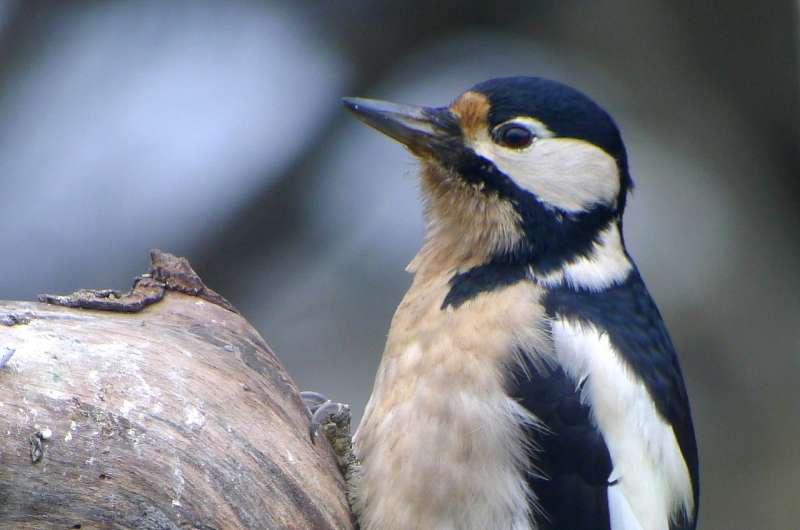Great spotted woodpeckers may recognize each other individually by drumming rhythms

The drum rolls of great spotted woodpeckers may be used to identify individuals, according to a study published February 7, 2018 in the open-access journal PLOS ONE by Michal Budka from Adam Mickiewicz University, Poland, and colleagues.
Many birds make individually-specific calls or songs that allow them to be recognized by others of the same species; for example, female zebra finches can identify their mates, and king penguin chicks can identify find their parents out of the several thousand birds in a colony. In addition, some birds make other kinds of sounds that signal their sex; for example, oriental white storks clatter their mandibles together in a sex-specific fashion, and male common snipes make a drumming sound with their tail feathers.
Woodpeckers drum with their bills, pecking rapidly and repetitively to produce a series of drum rolls. Both male and female woodpeckers use drumming to attract mates and deter rivals. Budka and colleagues investigated the role of drumming in the great spotted woodpecker (Dendrocopos major), the most common woodpecker species in the Western Palearctic. The researchers recorded drumming of 41 great spotted woodpeckers (26 males, nine females, and six unsexed individuals), and compared the length of intervals between strokes as well as the number of strokes within a drumming roll.
The researchers found that the intervals between strokes were shorter in males than in females. But they concluded that while temporal patterns of the woodpeckers' drumming may provide a clue to sex determination, they are not enough to distinguish the sexes unambiguously.
It may be possible, however, to distinguish individual great spotted woodpeckers based on drumming patterns, including the speed of strokes as well as the number of strokes within a drum roll. The researchers found that a model of drumming correctly classified 86% of rolls to the individual woodpecker that produced them. In addition, they speculate that rate and duration of drumming may signal the quality of individual birds because it takes well-developed back and neck muscles to produce fast, long-lasting drum rolls.
More information: Budka M, Deoniziak K, Tumiel T, Wo?na JT (2018) Vocal individuality in drumming in great spotted woodpecker—A biological perspective and implications for conservation. PLoS ONE 13(2): e0191716. doi.org/10.1371/journal.pone.0191716
Journal information: PLoS ONE
Provided by Public Library of Science



















